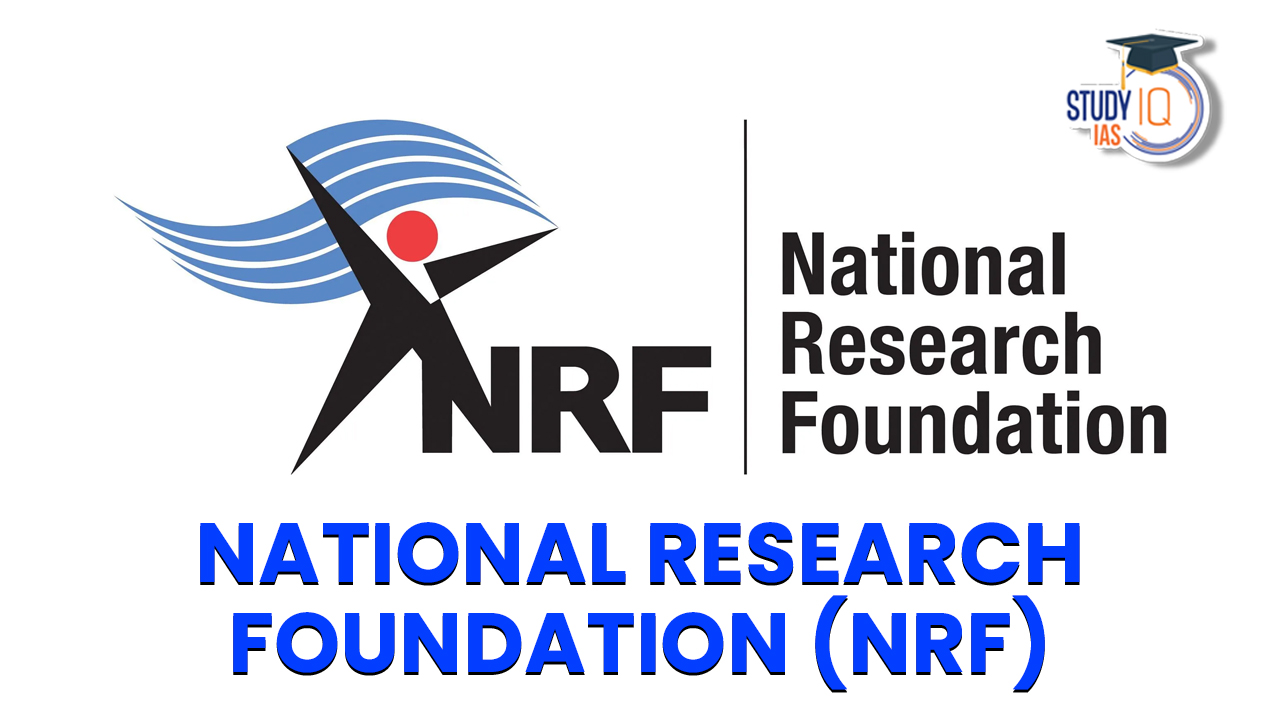Table of Contents
Context: The National Research Foundation (NRF) that was recently approved by the Union Cabinet has been the centre of discussion among the scientists wrt the kind of research that the NRF should fund such that the outcomes are innovative solutions to practical challenges.
Understanding National Research Foundation (NRF):
About the National Research Foundation (NRF):
- NRF is a new central entity aimed at funding, promoting, and mentoring scientific research in higher educational institutions across the country.
- The NRF will replace the existing Science and Engineering Research Board (SERB), which was established in 2008 as a statutory body under the Department of Science and Technology (DST).
- The primary goal of the NRF: To foster a vibrant research culture within universities and colleges, marking a new era in Indian academia.
- Modelled on the highly successful U.S. National Science Foundation, the NRF seeks to integrate the funding of scientific projects, breaking away from the siloed approach of the past.
- Origin: The concept of the NRF was first introduced by Prime Minister in 2019 at the Indian Science Congress. Later, the establishment of NRF was included as a significant recommendation in the National Education Policy 2020.
- Budget and Funding Model:
- The NRF is expected to have an initial budget of Rs 50,000 crore over a five-year period from 2023 to 2028.
- A significant portion of this funding – Rs 36,000 crore – is expected to come from industry contributions, establishing a novel 50:50 funding model between the Department of Science and Technology (DST) and industry.
- This unique funding structure will further bolster the foundation’s financial sustainability, ensuring continuous support for deserving research projects.
- Aims and Scope:
- The NRF’s primary objective is to bridge the gap between research and higher education in India, a dichotomy that has limited the development of the nation’s scientific capabilities.
- The foundation aims to build research capacities within Indian universities, bringing together the realms of education and research.
- In addition to promoting research in natural sciences and engineering, the NRF will also fund research in social sciences, arts, and humanities.
- Governance and Structure:
- The NRF will be administratively housed under the DST and will be governed by a 16-member board, comprising two members from DST, five from industry, one from humanities, and six experts selected based on the project under review.
- Signifying the foundation’s wide-ranging influence, the Prime Minister will serve as the ex-officio president of the board, with the Minister of Science and Technology and the Minister of Education as ex-officio vice presidents.
- The executive council, overseeing the NRF’s functioning, will be chaired by the Principal Scientific Advisor to the government of India.
The need for NRF:
- Inadequate Research Investment: India allocates only 0.7% of its GDP to research and development (R&D), significantly lower than the world average of 1.8%.
- Low Research Output: India lags behind in generating patents and research publications.
- For instance, China files over 1.5 million patent applications, while India files just 45,057, indicating a considerable gap in innovation and intellectual property creation.
- Insufficient Private Sector Involvement: About 56% of R&D spending comes from the government and 35% from the private sector.
- In contrast, technologically advanced countries like Israel see a significant private sector contribution (up to 88%), fostering innovation and competitiveness.
- Limited Research Opportunities: The existing research funding tends to concentrate on elite institutions and researchers, excluding those in underprivileged regions.
- Fragmented Research: Research activities in India are often conducted independently by various institutions, leading to inefficient resource utilization and duplication of efforts.
- Neglect of Social Sciences and Humanities: Research funding in India predominantly favors natural sciences and engineering, neglecting social sciences and humanities.
Concerns associated with the National Research Foundation (NRF):
- Erosion of Public Funding: The NRF’s emphasis on private sector funding may reduce the government’s commitment to public funding for research.
- Centralization of Decision-Making: The NRF’s decision-making structure, with a central governing body chaired by the Prime Minister, is seen as highly centralized.
- This centralization may limit the diversity and plurality of research initiatives and reduce the involvement of state governments, state higher education councils, and other relevant stakeholders in the decision-making process.
- Insufficient Block Funding: The NRF’s focus on project funding may not address the need for sustained support for research institutions and universities. Block funding for state systems of higher education is considered essential to strengthen these institutions and promote research.
- Overreliance on Foreign R&D: The significant involvement of foreign multinational corporations (MNCs) in R&D in India, without a strong connection to India’s development needs, is a concern.
Way Forward
- Greater Public Investment: Adequate public funding is essential for achieving self-reliance and global technology leadership.
- Collaboration with CPSEs: Encourage collaboration between Central Public Sector Enterprises (CPSEs), governmental research institutions, and higher education institutions to drive technology transfer and research direction in strategic areas.
- Statutory Targets: Set statutory targets for the NRF budget, such as a percentage of the Union government’s development expenditure and the gross value of high-tech industries, to ensure adequate funding.
- Stringent Criteria for Private Funds: If accepting private sector funding, ensure that it comes without undue influence or conditions that could compromise the independence of research.
- Prioritize Inclusive Research: Prioritize projects that benefit higher education institutions, government research institutions, civil society organizations, cooperative industrial R&D, and projects focused on economic, social, and ecological justice.


 New Window of Opportunity for India amid...
New Window of Opportunity for India amid...
 Cetacean Morbillivirus: Meaning, Feature...
Cetacean Morbillivirus: Meaning, Feature...
 Acid Attacks in India: Causes, Laws, Sta...
Acid Attacks in India: Causes, Laws, Sta...

























